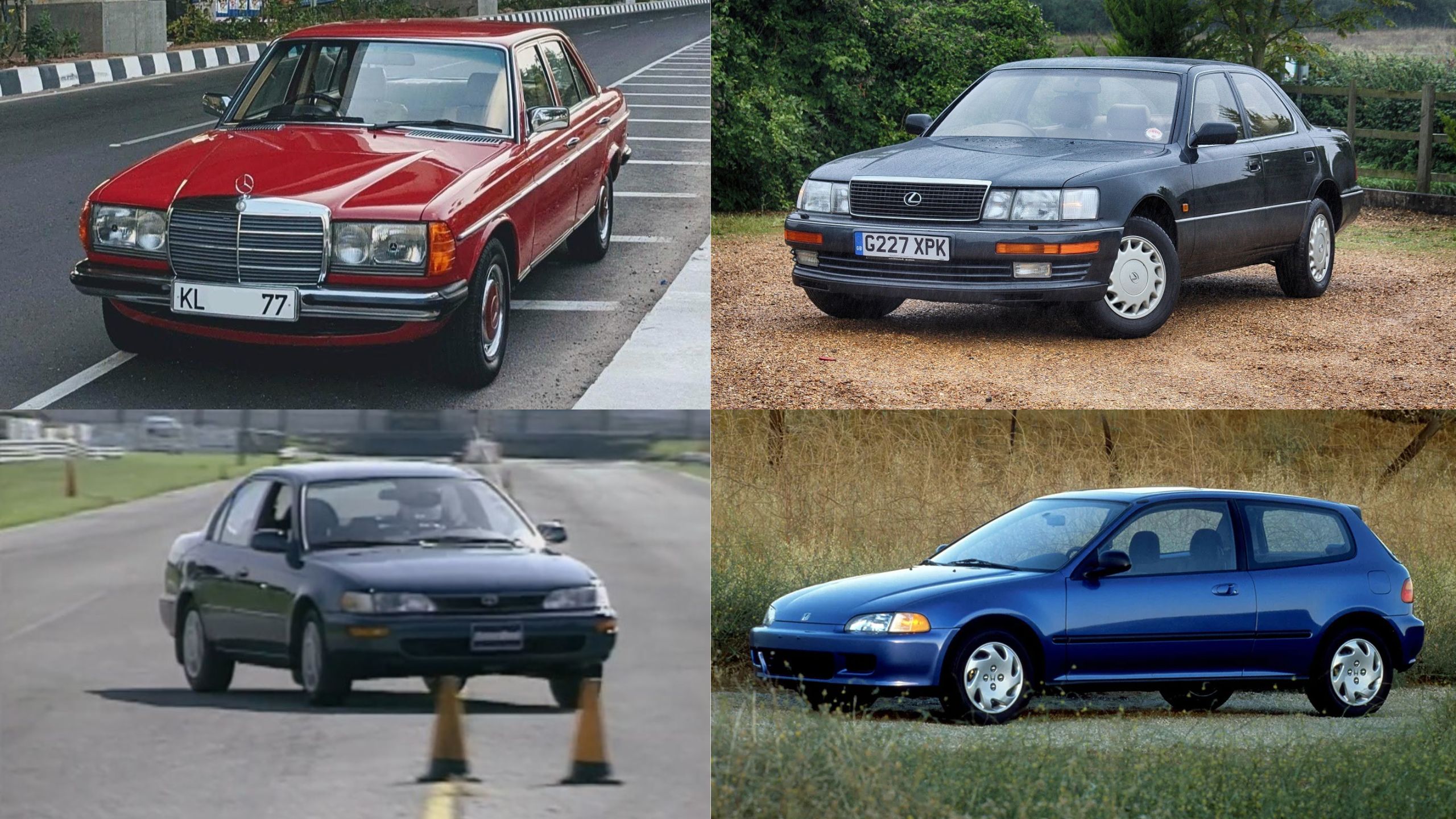In the ever-evolving automotive world, some vehicles quietly earn legendary status not through flashy marketing campaigns or record-breaking performance figures, but through their unwavering reliability.
While enthusiasts may obsess over horsepower numbers and zero-to-sixty times, there’s something truly special about machines that simply refuse to die.
These unsung heroes often fade from the spotlight as newer, more glamorous models take center stage, yet they continue to serve their owners faithfully for hundreds of thousands of miles.
This list celebrates ten automotive underdog vehicles that may have been overlooked during their time but have since proven themselves as paragons of dependability.
From humble economy cars to utilitarian workhorses, these models demonstrate that exceptional engineering doesn’t always come with fanfare. Some were commercial failures despite their mechanical excellence, while others sold well but have since been forgotten by all except their devoted owners.
What unites these diverse vehicles is their ability to keep running long after their contemporaries have been scrapped. They represent the pinnacle of durable design and serve as a testament to the engineers who prioritized longevity over trendiness. Let’s explore these mechanical marvels that continue to defy expectations and the passage of time.
1. Volvo 240 Series (1974-1993)
The Volvo 240 series represents perhaps the ultimate expression of automotive functionality over form. With its unmistakably boxy silhouette that remained virtually unchanged for nearly two decades, the 240 was never destined to win beauty contests.
Yet beneath its utilitarian exterior beat the heart of an engineering masterpiece designed with one primary goal: to outlast everything else on the road.
Introduced in 1974 as an evolution of the already robust 140 series, the 240 featured significant safety improvements, including crumple zones, reinforced passenger compartments, and innovative side impact protection.
These advancements earned the model a reputation as a safety pioneer, but it was the 240’s mechanical simplicity that would cement its legacy as a reliability icon. The cornerstone of the 240’s durability was its understressed inline-four engine, particularly the B230 variant introduced in the 1980s.
This red-block engine was deliberately overbuilt, with ample cooling capacity and substantial bearing surfaces that could withstand decades of continuous operation. Many owners report exceeding 300,000 miles without major mechanical intervention, with some well-maintained examples surpassing the 500,000-mile mark.
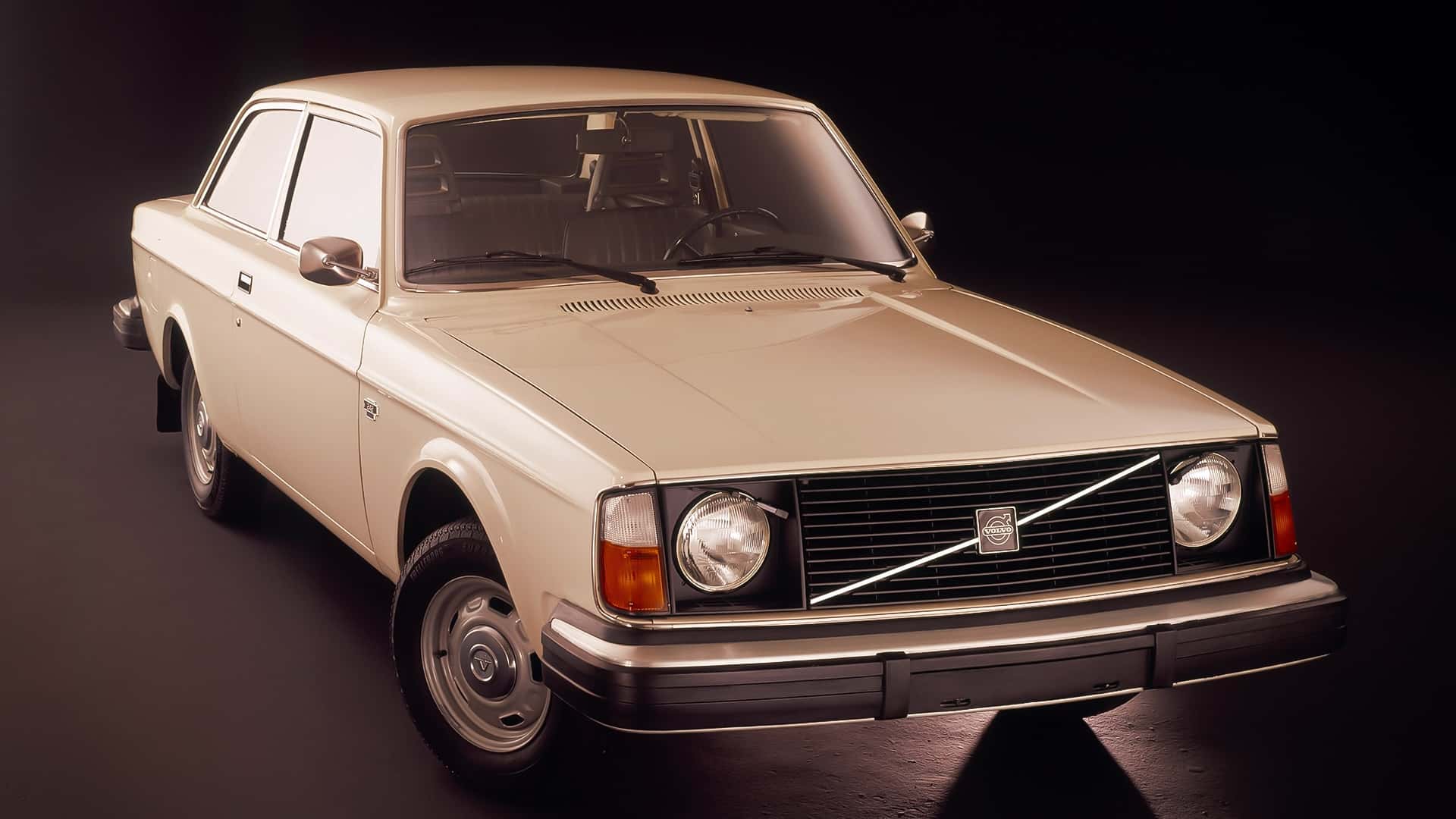
What made the 240 truly special was its reparability. The spacious engine bay allowed easy access to components, while the straightforward mechanical design meant that even moderately skilled owners could perform most maintenance tasks themselves.
Unlike modern vehicles packed with proprietary electronics, the 240’s systems were transparent and logical, making diagnosis and repair refreshingly straightforward.
The 240’s interior matched its mechanical ethos: functional, comfortable, and built to last. The seats, often upholstered in virtually indestructible cloth or leather, maintained their support even after decades of use.
Climate control systems remained effective long after those in competitor vehicles had failed, and electrical gremlins, the bane of many European cars, were remarkably absent.
Despite production ending in 1993, thousands of 240s remain in daily service worldwide, stubbornly refusing retirement. Their continued presence on roads from Sweden to New Zealand stands as a rolling rebuke to planned obsolescence and disposable consumerism.
For many owners, their 240 isn’t just transportation, it’s a family member, accumulating memories and developing character with each passing mile.
2. Toyota Hilux (Fourth Generation, 1983-1988)
The fourth-generation Toyota Hilux exists in a world of reliability that borders on mythical. Made famous by Top Gear’s unsuccessful attempts to destroy one, subjecting it to drowning, building demolition, fire, and even placement atop an imploding building, this humble pickup truck has earned a reputation that transcends conventional automotive durability.
Introduced in 1983, this iteration of the Hilux represented Toyota’s commitment to creating truly unbreakable vehicles. The truck’s most celebrated powerplant was the 22R family of engines, particularly the fuel-injected 22R-E introduced in 1985.
These 2.4-liter four-cylinder engines embodied simplicity and robustness with their single overhead camshaft design, timing chain (rather than failure-prone belts), and cast iron block. What made them exceptional wasn’t cutting-edge technology but rather conservative engineering with generous tolerances and moderate power outputs that minimized component stress.
The Hilux’s mechanical resilience extended well beyond its engine. Its ladder frame chassis was constructed of thick, fully-boxed steel that resisted flexing and corrosion.
The suspension system featuring solid axles and leaf springs prioritized durability over comfort, allowing the truck to absorb punishing terrain while carrying substantial loads.
Even when components did wear out, their simple design meant repairs could be performed with basic tools and minimal technical knowledge a critical advantage in remote areas without sophisticated service facilities.
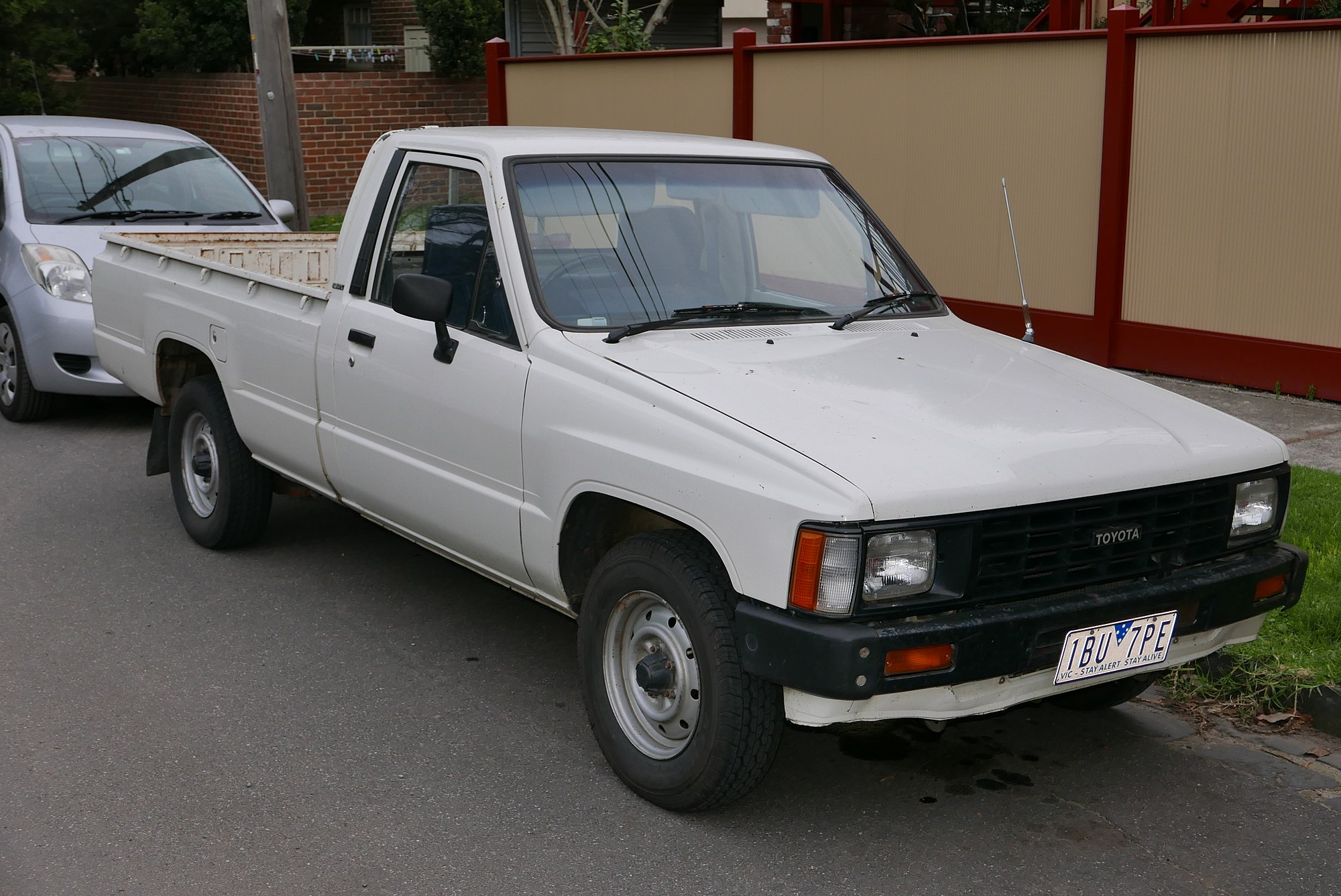
This generation of Hilux found particular favor in developing nations, war zones, and agricultural communities where vehicle failure wasn’t merely an inconvenience but potentially life-threatening.
Its ability to operate reliably with minimal maintenance and poor-quality fuel made it indispensable across Africa, the Middle East, and rural Australia. Stories abound of these trucks exceeding 500,000 miles on original drivetrains, often under the most punishing conditions imaginable.
What’s particularly remarkable about the fourth-generation Hilux is its balance of durability with everyday usability. Unlike some utilitarian vehicles that sacrifice all comfort for toughness, the Hilux remained reasonably comfortable, efficient, and civilized on paved roads.
This versatility helped it transition from workhorse to cultural icon, representing dependability and resilience across diverse cultures. Decades after production ended, these trucks command premium prices on the used market, often selling for several times their original purchase price when found in good condition.
Their continued presence in challenging environments worldwide serves as a testament to an era when automotive durability wasn’t compromised for styling trends or marginal efficiency gains.
3. Buick Century/Oldsmobile Cutlass Ciera (1982-1996)
Few vehicles embody the concept of “automotive cockroach” better than the platform-sharing Buick Century and Oldsmobile Cutlass Ciera. Built on General Motors’ ubiquitous A-body platform, these midsize sedans and wagons were never exciting, innovative, or particularly desirable.
Yet they stubbornly refused to disappear from American roads for decades after production ended, earning reluctant respect even from dedicated GM critics.
When introduced in 1982, these midsize offerings represented GM’s attempt to modernize with front-wheel drive and more efficient packaging.
Styling was conservative to the point of anonymity, rectangular shapes with minimal adornment that blended seamlessly into suburban parking lots. Interior design followed suit with straightforward controls, bench seats, and materials chosen more for durability than tactile pleasure.
This was deliberate market positioning: these weren’t cars for enthusiasts but rather practical transportation for families and older buyers seeking reliability over excitement. The secret to these cars’ extraordinary longevity lay in their thoroughly proven mechanical components.
By the mid-1980s, GM had worked through early teething issues with its front-wheel drive systems, resulting in a surprisingly robust drivetrain. The 2.5-liter “Iron Duke” four-cylinder and 3.3/3.8-liter V6 engines were understressed, operating well below their potential output to enhance longevity.
The simple three-speed automatic transmissions lacked the complications of overdrive units but proved virtually indestructible with basic maintenance.
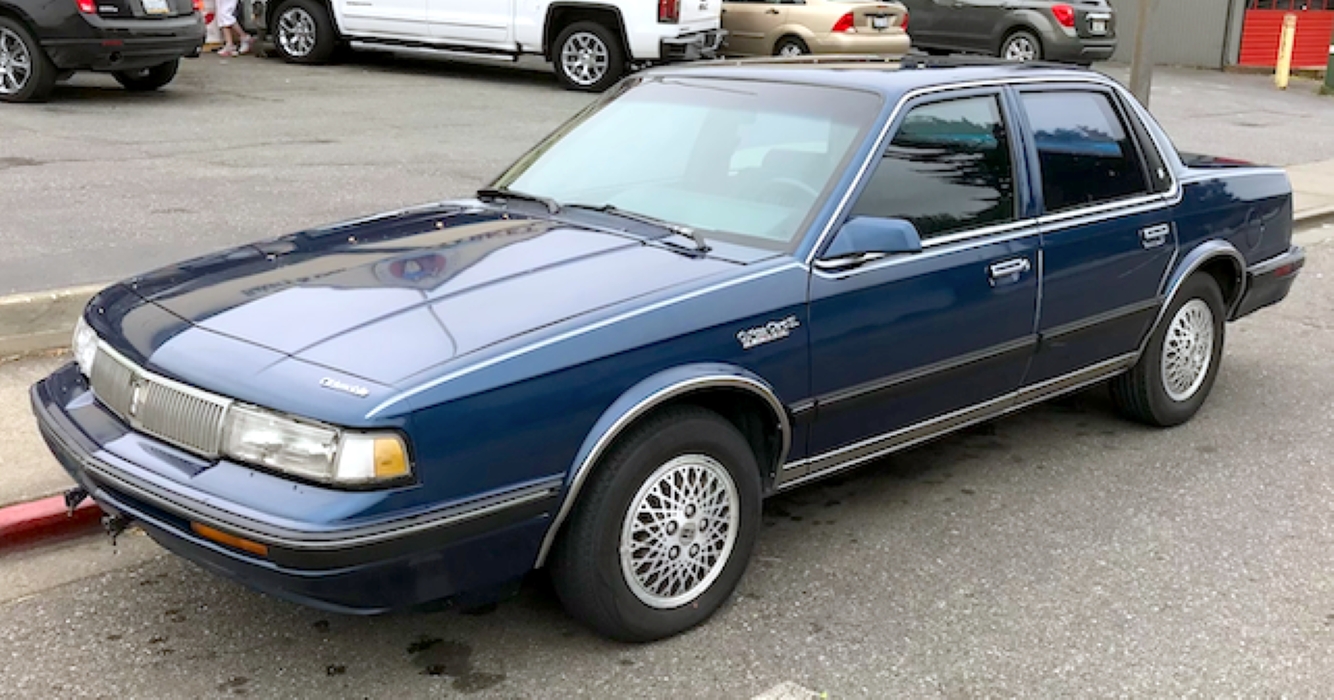
What’s remarkable about these A-bodies isn’t that they could reach high mileage, many vehicles can with fastidious care, but rather how much neglect they could endure while continuing to operate.
Stories abound of these cars running for years with minimal oil changes, ignored warning lights, and deferred maintenance that would have sidelined most competitors. Their cockroach-like ability to survive suboptimal conditions made them particularly common in economically disadvantaged areas where maintenance funds were scarce.
These GM A-bodies became fixtures of American daily life throughout the 1980s and 1990s, serving as everything from family haulers to police detective vehicles, taxi cabs to corporate fleet cars.
Their straightforward nature made repairs accessible to shade-tree mechanics, while parts availability remained excellent due to the millions produced across multiple GM divisions.
Even as more sophisticated vehicles have come and gone, surviving Century and Cutlass Ciera models continue their daily duties across America, having outlived not just their contemporary competitors but even the Oldsmobile division itself.
While they may not inspire passion, these automotive survivors have earned grudging respect through sheer persistence, continuing to provide reliable transportation long after flashier, more celebrated models have been crushed into scrap metal.
4. Mercedes-Benz W123 (1976-1985)
The Mercedes-Benz W123 series stands as perhaps the most thoroughly engineered automobile of the modern era, a high-water mark of durability that even its maker has struggled to match in subsequent decades.
Introduced in 1976, the W123 represented Mercedes-Benz’s commitment to building vehicles that were designed not merely to last through a typical ownership period but to function reliably for generations.
What separated the W123 from its contemporaries was Mercedes’ uncompromising approach to development and manufacturing. Each component was designed with substantial safety margins and subjected to rigorous testing.
The engineering team prioritized longevity and serviceability over manufacturing expedience, resulting in a vehicle that cost more to produce but delivered exceptional value through its extended service life.
Materials were selected for durability rather than cost savings, from the thick-gauge steel body panels to the MB-Tex upholstery that has proven nearly impervious to wear.
The diesel variants, particularly the 300D and 300TD, achieved legendary status for their mechanical resilience. The naturally-aspirated OM617 five-cylinder diesel engines were conservatively rated at just 77 horsepower in early models, but their over-engineered design allowed them to accumulate astronomical mileages with minimal internal wear.
Their mechanical fuel injection systems eliminated the electronic complexities that plague modern engines, while the manual gearboxes and robust automatic transmissions proved equally durable when maintained properly.

Mercedes’ attention to detail extended to seemingly minor components that would become failure points in lesser vehicles. Self-adjusting rear suspension utilized hydropneumatic spheres that maintained ride height regardless of load.
Electrical systems were designed with redundancy and protection against corrosion. Even the climate control systems continued functioning effectively decades after production, a rarity among vehicles of this era.
The W123’s reputation for durability made it particularly popular in extreme environments worldwide. They became the taxi of choice in places like Morocco, Turkey, and Lebanon, where many accumulated millions of kilometers on original drivetrains.
In Central Africa and the Middle East, diplomatic corps and NGOs relied on them for their ability to operate reliably in areas without sophisticated service facilities. Even in Northern Europe, their resistance to rust and cold-weather reliability set them apart from contemporaries.
This commitment to quality came at a price; the W123 was significantly more expensive than competitors when new. However, their total cost of ownership over the decades proved them exceptional values.
Even today, nearly four decades after production ended, clean examples command premium prices and enjoy an enthusiastic following of owners who appreciate the irreplaceable quality of these machines.
For many, the W123 represents not just transportation but a philosophy of consumption, investing in excellence rather than accepting planned obsolescence.
Also Read: 12 Manufacturer Models Known for Crossing the Million Mile Mark
5. Ford Crown Victoria (1992-2011)
The Ford Crown Victoria emerged as the unlikely survivor of America’s once-dominant full-size sedan segment, outliving all its domestic competitors to become the last traditional rear-wheel-drive, body-on-frame passenger car produced in North America.
While automotive evolution pushed toward unibody construction, front-wheel drive, and downsized engines, the Crown Victoria defiantly maintained its traditional architecture, a decision that would cement its reputation for bulletproof reliability.
When the redesigned “Aero” Crown Victoria debuted for 1992, its rounded styling masked what was essentially proven technology underneath. The Panther platform had been refined through years of service, featuring a rugged perimeter frame that provided exceptional crash protection and durability.
The suspension design featuring a live rear axle, coil springs, and control arms was hardly cutting-edge, but it was simple, serviceable, and nearly indestructible under normal use.
At the heart of the Crown Victoria’s legendary reliability was the 4.6-liter Modular V8 engine, an overhead cam design that proved remarkably trouble-free compared to both its predecessors and many competitors.
With its cast iron block, the engine was overbuilt for its modest power output, typically producing between 190-250 horsepower depending on the year and specification.
This conservative tuning meant components were rarely stressed, contributing to engine longevity regularly exceeding 300,000 miles. The 4R70W automatic transmission proved equally durable when maintained, often matching the engine’s lifespan.
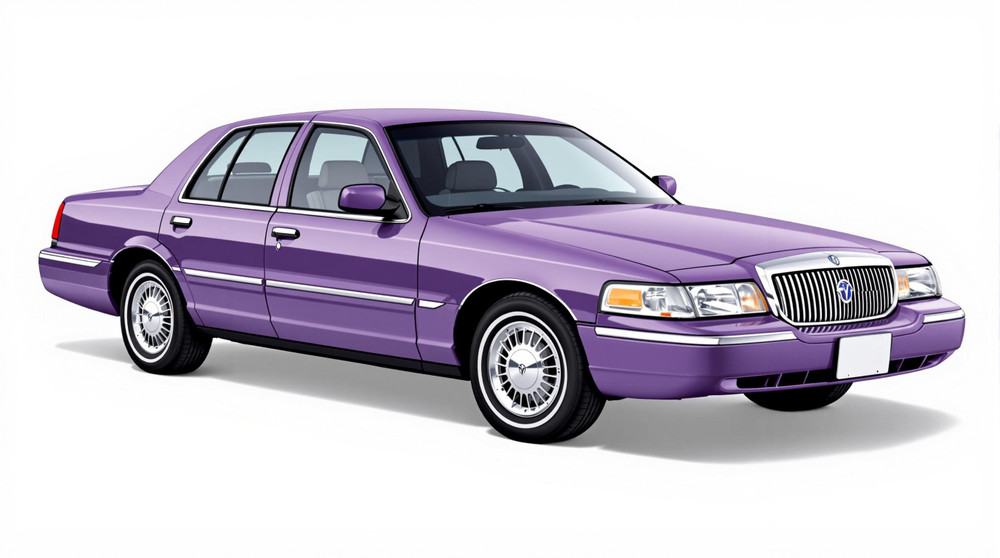
The Crown Victoria found its true calling in fleet service, particularly as police interceptors and taxis. Police departments nationwide embraced the model for its combination of durability, reasonable operating costs, and easy repairability.
Taxi operators similarly appreciated its capacious interior, trunk space, and ability to absorb punishment while maintaining low downtime. These demanding applications highlighted the Crown Victoria’s exceptional reliability many police interceptors accumulated over 400,000 miles in round-the-clock service before retirement.
What made the Crown Victoria truly special was its repairability. The spacious engine compartment allowed easy access to components, while the body-on-frame design meant collision damage could often be repaired without specialized equipment.
Parts commonality across the long production run kept maintenance costs reasonable, while the mechanical simplicity meant even moderately skilled mechanics could perform most repairs.
Despite production ending in 2011, Crown Victorias remain a common sight on American roads, particularly as taxis in cities that haven’t mandated newer vehicle types.
Their gradual disappearance marks the end of an automotive era, one where simplicity, durability, and ease of service took precedence over fashion and technological complexity.
For those who valued these attributes, the Crown Victoria represented not just transportation but a philosophy of automotive design increasingly rare in the modern marketplace.
6. Lexus LS400 (First Generation, 1989-1994)
When Toyota launched the Lexus brand in 1989, they faced the daunting challenge of establishing credibility in the luxury segment dominated by European manufacturers with decades of heritage.
Their answer was the LS400, a flagship sedan representing an obsessive pursuit of engineering excellence that would reset expectations for luxury car reliability. Three decades later, these first-generation models continue to function with astonishing dependability, often requiring little more than routine maintenance even with odometer readings exceeding 300,000 miles.
The LS400’s exceptional durability stemmed from Toyota’s unprecedented development process. Project F1 (Flagship One) involved 1,400 engineers, 2,300 technicians, and 220 support workers over six years, resulting in 450 prototypes and 900 engine designs.
This exhaustive approach produced the legendary 1UZ-FE V8 engine, an all-aluminum 4.0-liter masterpiece featuring quad cams, 32 valves, and exceptional balance that allowed it to idle so smoothly that a coin could stand on edge atop the running engine.
Despite producing 250 horsepower, the engine was dramatically understressed, operating with large safety margins that contributed to its extraordinary longevity.
Toyota’s fanatical attention to detail extended throughout the vehicle. The four-speed automatic transmission was engineered for seamless operation and exceptional durability.
The electrical system is often a weak point in luxury vehicles of this era feature military-grade connectors and redundant wiring to prevent failures. Even seemingly minor components received extraordinary scrutiny; engineers tested 24 different types of leather before selecting the material for seats that would maintain their appearance and comfort through decades of use.
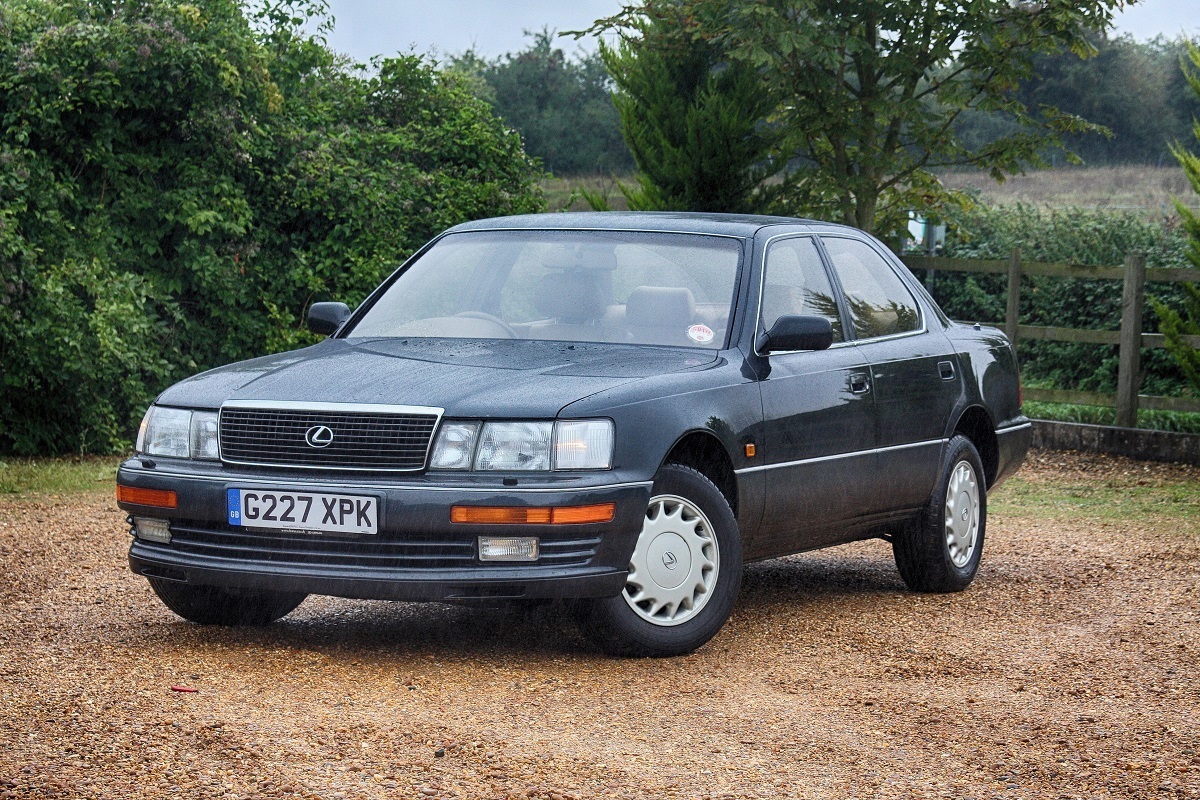
What truly distinguished the LS400 was its build quality. Assembly took place in a dedicated facility where specially trained technicians worked in dust-free conditions more reminiscent of semiconductor manufacturing than traditional automotive production.
This fastidious approach eliminated the quality variations that plagued many luxury competitors, resulting in cars that maintained their tight tolerances and refined operation indefinitely when properly maintained.
The LS400’s reliability proved transformative for the luxury car market. While European competitors had conditioned buyers to accept frequent workshop visits as part of the ownership experience, Lexus demonstrated that extraordinary refinement and dependability weren’t mutually exclusive.
Many original owners reported ten or more years of trouble-free operation, an unprecedented achievement for a complex luxury sedan. These first-generation models have now achieved cult status among enthusiasts who appreciate their engineering integrity.
Clean, low-mileage examples command surprisingly strong prices, while even high-mileage specimens remain sought after for their ability to deliver hundreds of thousands of additional miles with minimal investment.
The first-generation LS400 stands as a watershed moment in automotive history the point where reliability expectations for all luxury vehicles fundamentally changed, forcing every manufacturer to improve their quality control or risk marketplace irrelevance.
7. Geo Prizm/Toyota Corolla (1993-2002)
The Geo Prizm (later sold as the Chevrolet Prizm) stands as one of the most successful automotive joint ventures in American history, a remarkable case of badge engineering that gave domestic buyers access to Toyota’s legendary reliability while wearing General Motors badging.
Built at the NUMMI plant in Fremont, California (now Tesla’s factory), the Prizm was mechanically identical to the contemporary Toyota Corolla, utilizing the same engines, transmissions, and most major components.
When the second-generation Prizm debuted for the 1993 model year (coinciding with the seventh-generation Corolla), it featured Toyota’s exceptional 1.6L 4A-FE and 1.8L 7A-FE four-cylinder engines, powerplants renowned for their ability to exceed 300,000 miles with basic maintenance.
These engines embodied Toyota’s engineering philosophy of moderate power outputs, conservative internal tolerances, and robust materials that prioritized longevity over maximum performance. Their timing chains (rather than belts) eliminated a common maintenance requirement, while the straightforward port fuel injection systems proved remarkably trouble-free compared to contemporaries.
Paired with either a five-speed manual transmission or a four-speed automatic, the Prizm’s drivetrain represented proven technology refined through millions of real-world miles.
The automatic transmissions were particularly noteworthy for their durability a stark contrast to many domestic automatics of the era that frequently failed before 100,000 miles. With proper fluid changes, these transmissions regularly matched the engines’ longevity, something few competitors could claim.
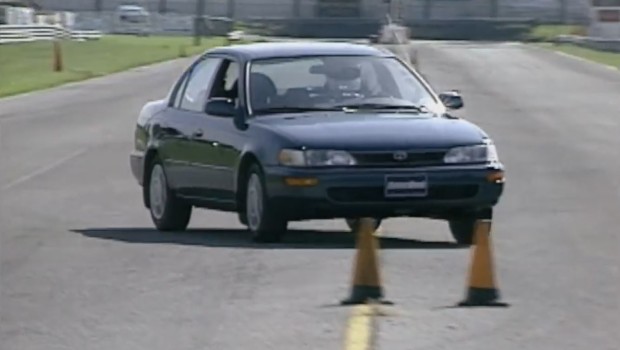
The Prizm’s advantage extended beyond its powertrain. The electrical systems are often the Achilles’ heel of aging vehicles featured Toyota’s a characteristically simple and robust design with high-quality connectors and wiring.
Suspension components, while not exotic, were engineered for durability and could maintain acceptable handling characteristics well beyond 200,000 miles. Even the air conditioning systems, typically troublesome in vehicles of this era, proved remarkably resilient.
What made the Prizm particularly significant was its market positioning. Priced slightly below equivalent Corollas and often heavily discounted as domestic dealers struggled to move compact cars, these vehicles represented extraordinary value.
Many budget-conscious buyers who couldn’t afford (or wouldn’t consider) a Japanese-branded vehicle inadvertently ended up with Toyota engineering at Chevrolet prices a fortuitous accident that often resulted in the most reliable vehicle they had ever owned.
Despite their mechanical excellence, Prizms never achieved the cultural cachet of their Corolla siblings. Their anonymous styling and domestic badging led many to overlook them on the used market, creating bargain opportunities for informed buyers.
Even today, surviving examples continue providing dependable transportation for budget-minded owners, often accumulating mileages that would have sent most contemporaries to the scrapyard years earlier. Their continued presence on American roads serves as a rolling testimony to the engineering excellence that resulted from this unlikely partnership between automotive giants.
8. Honda Civic (Fifth Generation, 1992-1995)
The fifth-generation Honda Civic represents a perfect engineering sweet spot, combining mechanical simplicity with modern refinement to create what many enthusiasts consider the most durable iteration of this popular compact.
Arriving at the peak of Honda’s engineering prowess before more stringent emissions regulations and cost-cutting measures would complicate later models, these Civics established a reputation for virtually bulletproof reliability that has made them increasingly appreciated as time has passed.
Introduced for the 1992 model year, this generation featured Honda’s legendary D-series engines, particularly the D15B, D16Z6, and D16Z9 variants. These powerplants embodied Honda’s engineering philosophy with their elegant simplicity: single overhead cam design (with VTEC on some models), efficient combustion chambers, and precise manufacturing tolerances.
What made them extraordinary wasn’t revolutionary technology but rather exceptional attention to detail and build quality. Properly maintained, these engines regularly exceeded 300,000 miles without internal repairs, often continuing to run perfectly even after maintenance was neglected.
The fifth-generation Civic’s transmissions proved equally durable, with both manual and automatic options demonstrating remarkable longevity. The manual transmissions were particularly noteworthy for their precise shifting and robust construction, often matching the engines’ lifespan with minimal attention beyond fluid changes. Even the automatic transmissions, typically a weak point in compact cars of this era, proved surprisingly reliable when maintained properly.
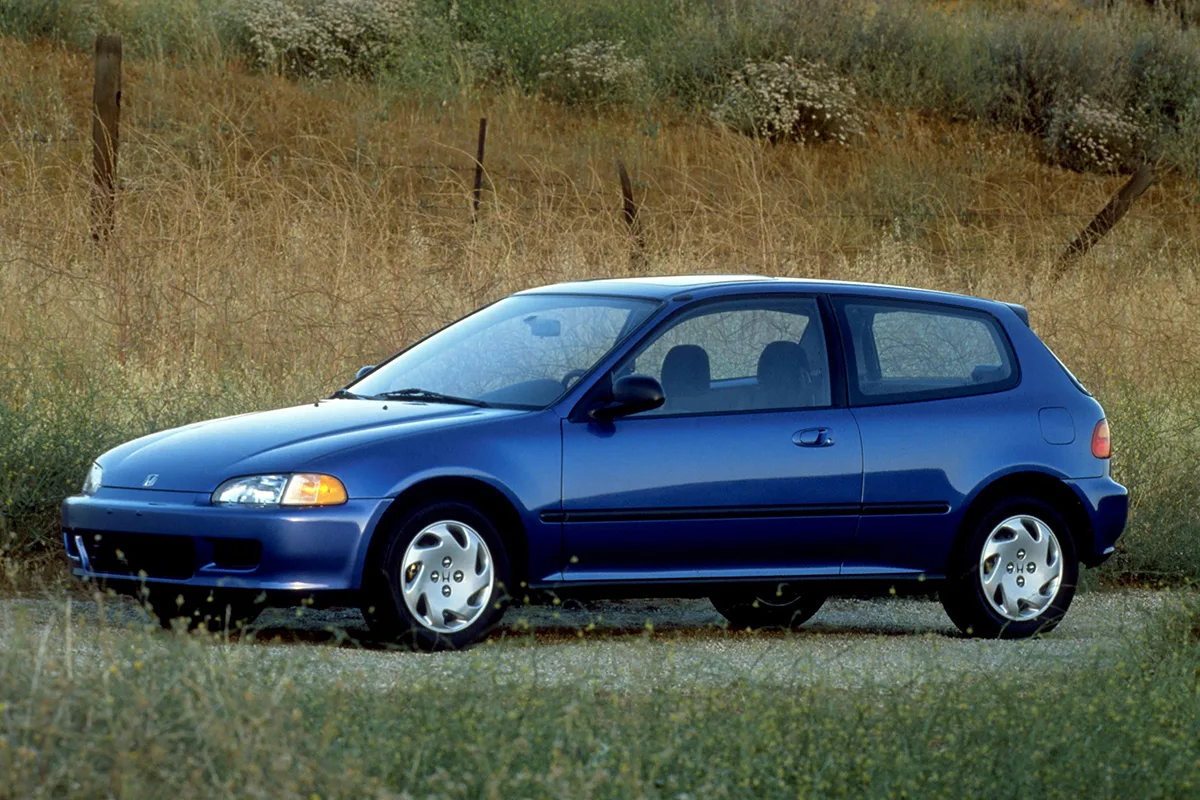
Honda’s holistic approach to engineering extended beyond the powertrain. The double-wishbone suspension system provided both excellent handling characteristics and impressive durability, maintaining proper alignment and ride quality far longer than the MacPherson strut designs used by most competitors.
Electrical systems were logically designed with high-quality connectors that resisted corrosion and vibration damage. Even interior components like switches, handles, and seat mechanisms demonstrated remarkable resistance to wear, maintaining their functionality through decades of use.
Perhaps most importantly, these Civics proved remarkably forgiving of maintenance neglect a quality that ensured their survival through multiple owners and varying levels of care.
While they performed best with regular service, they could tolerate extended oil change intervals, missed tune-ups, and even suboptimal repairs without catastrophic failure. This resilience made them particularly popular as hand-me-down vehicles and first cars for young drivers.
Today, clean fifth-generation Civics command increasingly strong prices among enthusiasts who appreciate their combination of reliability, efficiency, and engaging driving dynamics.
Their mechanical simplicity makes them ideal platforms for modification, while their inherent durability ensures many continue providing daily transportation three decades after production.
As automotive design has trended toward increasing complexity, these Civics stand as a testament to the enduring virtues of straightforward engineering executed with exceptional attention to quality.
9. Mazda B-Series/Ford Ranger (1993-2011)
The compact pickup truck segment has largely disappeared from American showrooms, but for nearly two decades, the mechanically identical Ford Ranger and Mazda B-Series pickups defined this practical category with their blend of affordability, utility, and remarkable durability.
Though never the flashiest or most powerful options in the marketplace, these twins earned devoted followings through their ability to absorb punishment while requiring minimal maintenance, qualities that have kept thousands on the road long after production ended.
The 1993 redesign represented a significant advancement, with Ford engineering taking the lead while Mazda contributed refinements to the shared platform.
The resulting trucks featured more rounded styling, improved ergonomics, and enhanced safety features while maintaining the robust mechanical simplicity that would define their reputation.
The ladder frame chassis utilized thick steel with seven cross-members, providing exceptional rigidity and durability even when subjected to continuous heavy loads or off-road abuse.
Among the available powertrains, the 2.3-liter and later 2.5-liter four-cylinder engines earned particular respect for their longevity. Though modest in output (typically producing between 100-120 horsepower), these engines featured iron blocks, durable timing chains, and conservative tuning that allowed them to regularly exceed 300,000 miles with basic maintenance.
For those requiring more power, the available 3.0L and 4.0L V6 engines sacrificed some efficiency but maintained the platform’s reputation for reliability, particularly in later iterations after initial design issues were resolved.
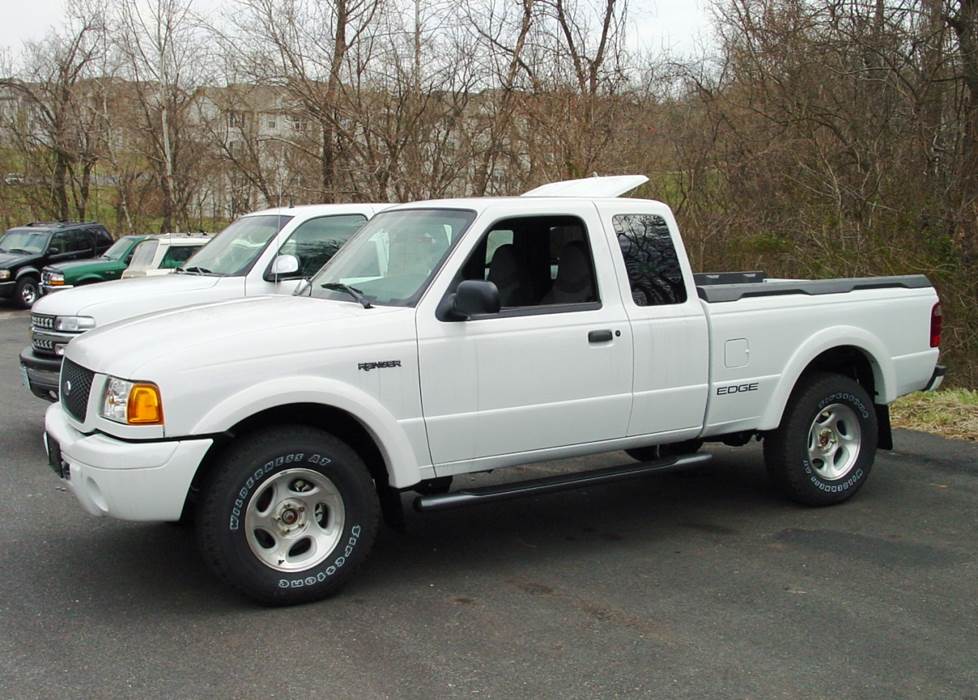
The manual transmissions, especially the Mazda-designed M5OD five-speed, proved exceptionally durable, often matching the engines’ longevity when maintained properly.
Even the automatic transmissions, while less robust, typically delivered at least 200,000 miles of service before requiring major attention impressive for trucks frequently subjected to towing and hauling stresses that accelerate wear on transmission components.
What made these trucks truly special was their repairability. The spacious engine compartments allowed easy access to components, while the simple mechanical systems could be diagnosed and repaired with basic tools and moderate technical knowledge.
Parts commonality across the long production run kept costs reasonable, while the massive production volumes ensured aftermarket support that continues today.
These qualities made the Ranger/B-Series particularly popular among owners who performed their maintenance, a self-selecting group that tends to keep vehicles operational far longer than average.
Despite their last model year in the U.S. being 2011, these compact pickups remain ubiquitous on American roads, particularly in rural areas and among tradespeople who appreciate their perfect combination of maneuverability and utility.
Their gradual transition from commonplace workhorses to increasingly valued classics reflects growing appreciation for their honest functionality and mechanical integrity qualities, often lacking in their more complex modern replacements.
For many owners, these humble pickups represent not just transportation but a philosophy of practical simplicity increasingly rare in today’s automotive world.
10. Saturn S-Series (1991-2002)
The Saturn S-Series represents one of the most fascinating paradoxes in American automotive history a car line built by General Motors, a company often criticized for quality issues, that developed a devoted following precisely because of its exceptional reliability.
Launched in 1991 as part of GM’s ambitious “different kind of car company” experiment, the S-Series sedans, coupes, and wagons featured innovative engineering and manufacturing techniques that resulted in vehicles that frequently outlasted not just their domestic competitors but many imported rivals as well.
Central to the S-Series’ durability was its unique powertrain. The 1.9-liter single and dual overhead cam four-cylinder engines (codenames LK0, L24, and LL0) featured aluminum blocks with cast iron cylinder liners, a combination that provided both lightweight and excellent wear resistance.
While modest in output (producing between 85-124 horsepower depending on configuration), these engines were overbuilt in critical areas. Their timing chains eliminated the maintenance requirements of belt-driven competitors, while the robust bottom end could withstand remarkable abuse.
Particularly noteworthy was the naturally aspirated DOHC variant, which developed a reputation for regularly exceeding 300,000 miles with basic maintenance.
The S-Series’ transmissions proved equally durable. The five-speed manual transmissions were particularly robust, often matching the engines’ longevity. Even the automatic transmissions, typically a weak point in compact cars demonstrated impressive durability when maintained properly, with many exceeding 200,000 miles before requiring major service.
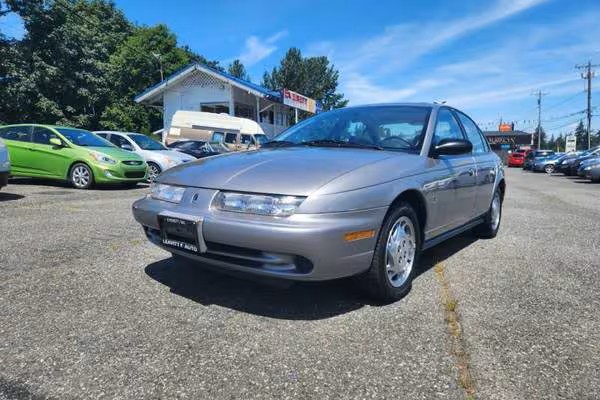
Perhaps the S-Series’ most innovative feature was its polymer body panels mounted on a steel space frame—a design that eliminated the corrosion concerns that plagued many competitors.
These dent-resistant panels maintained the vehicles’ appearance even after minor impacts and parking lot dings that would have damaged conventional steel bodies.
This resistance to visible aging contributed significantly to the cars’ longevity, as owners were less likely to replace vehicles that still looked relatively fresh after years of service.
Saturn’s dedicated manufacturing facility in Spring Hill, Tennessee, utilized unique processes developed specifically for these models. A no-haggle sales approach and exceptional customer service created unusually strong brand loyalty, with owners forming clubs and attending homecoming events at the factory.
This owner’s enthusiasm helped ensure many S-Series received proper maintenance throughout their lives, further enhancing their reputation. Despite production ending in 2002 (with the Saturn brand itself discontinued in 2010 during GM’s bankruptcy restructuring), S-Series models remain surprisingly common on American roads.
Their continued presence serves as rolling proof that domestic manufacturers could indeed produce vehicles with world-class reliability when given the freedom to innovate outside traditional corporate constraints.
For budget-conscious buyers seeking practical transportation likely to require minimal repairs, these overlooked classics continue to represent exceptional value in the used market, often providing years of additional service after more prestigious contemporaries have long since been scrapped.
Also Read: 10 Car Brands Known for Engines That Hit 500K Miles

